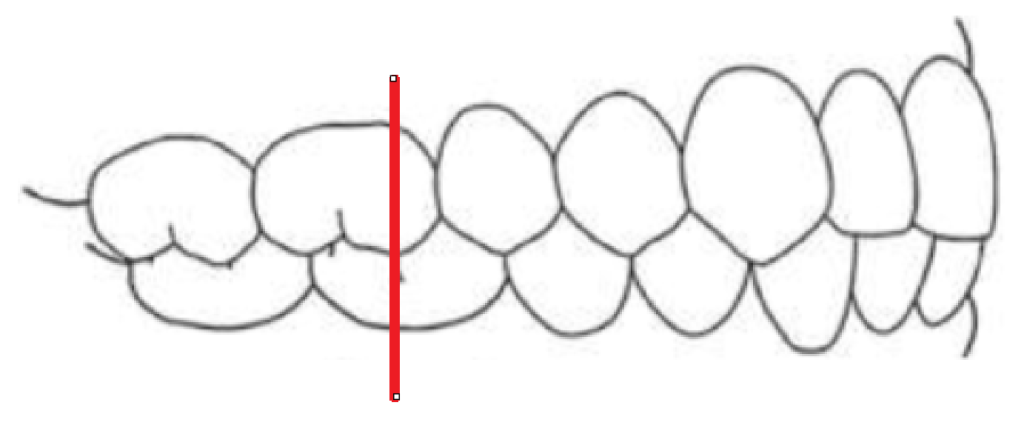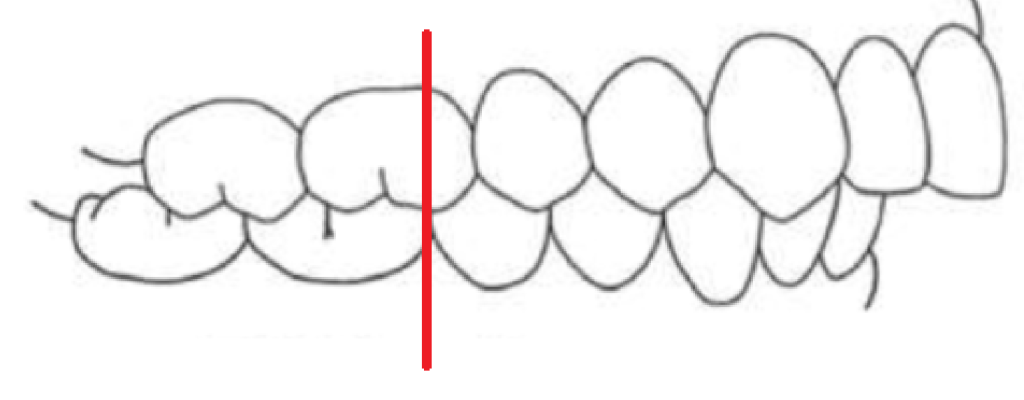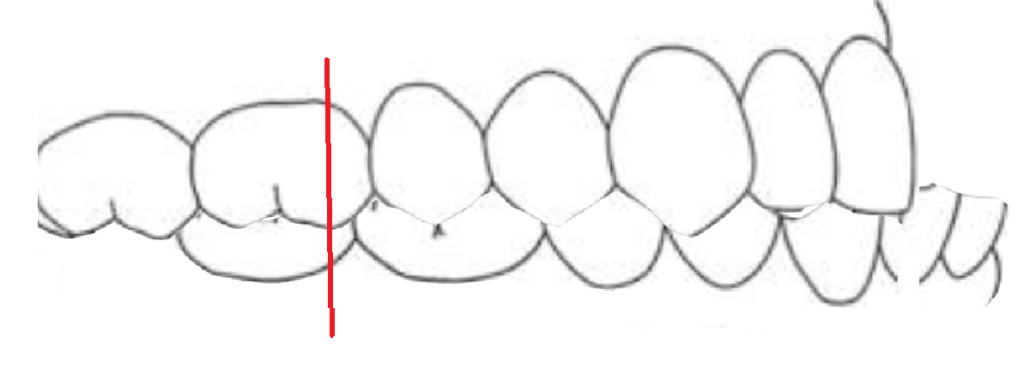Dental occlusion refers to how your upper and lower teeth come together when you close your mouth. It’s a fundamental concept in dentistry that affects everything from your bite to your overall oral health. Let’s delve into this topic to better understand its importance to dentistry.
The Basics of Dental Occlusion
At its core, dental occlusion is the relationship between your teeth and jaws. A healthy occlusion means that your teeth are properly aligned, and your bite functions efficiently without causing undue wear or discomfort.
Edward Hartley Angle, often referred to as the father of modern orthodontics, developed the first simple classification system for malocclusions (bad bites) in 1898. His work laid the foundation for understanding and treating various bite issues. He also designed the first orthodontic appliances, some of which are still in use today.
Angle’s Classification of Occlusion
Angle’s classification system is based on the alignment of the first permanent molars (the large teeth at the back of your mouth). We recommend you read our article about molars before proceeding as we will be using terms described in that article in this one. Angle’s classification of occlusion includes four main types:
Normal Occlusion:

This is when the upper and lower teeth fit together in a harmonious alignment. Specifically, the line of occlusion (an imaginary line through the center of each tooth) passes smoothly through the central fossae (the hollow parts of the teeth) and along the cingulae (the ridge on the back of the upper front teeth).
In normal dental occlusion, the upper first molar’s mesiobuccal (front outer) cusp fits into the buccal (outer) groove of the lower first molar. This is shown in the picture above

Class I Malocclusion:

In class I malocclusion, although the molars are correctly aligned, other issues like crowded or spaced teeth, and abnormal overbite or overjet (the horizontal distance between the upper and lower front teeth) can be present.
Interestingly, despite being called “malocclusion” this type of occlusion is the most normally found in patients (Over 60% of the population). This is because no teeth are perfect.

Class II Malocclusion:
In Class II Malocclusion. lower molars are positioned too far back compared to the upper molars. Specifically, the upper first molar’s mesiobuccal (front outer) cusp sits in front of the lower first molar’s buccal (outer) groove. This is what dentists call a “distocclusion”. This type is further divided into:
Division 1: Upper front teeth are protruded, or tilted forward.

Division 2: Upper front teeth are retruded, or tilted backward.

Class III Malocclusion:
In Class III Malocclusion, the lower molars are positioned too far forward, often leading to an underbite where the lower teeth overlap the upper teeth. Specifically, the upper first molar’s mesiobuccal cusp (front outer) sits behind the lower first molar’s buccal (outer) groove. This is known as a “mesiocclusion”.

Subdivisions in Malocclusions
Sometimes, only one side of the mouth deviates from the ideal occlusion. This can be classified as “Subdivision Right” or “Subdivision Left,” depending on which side is affected. If both sides deviate, the side with the more severe deviation (usually Class III) determines the overall classification.
The Role of Canines in Occlusion
Canine teeth (the pointed teeth next to your incisors) also play a crucial role in determining occlusion. They follow the exact same pattern as molar occlusion, just with different teeth.
- Neutro Cuspid: Corresponds to Class I occlusion.
- Distocuspid: Corresponds to Class II occlusion, where the lower canine is positioned behind the upper canine.
- Mesiocuspid: Corresponds to Class III occlusion, where the lower canine is positioned in front of the upper canine.
In cases where the molar and canine classifications don’t match, the canine classification usually takes precedence.
Factors Contributing to Malocclusions
Several factors can lead to malocclusions, including:
- Early loss of teeth (primary or permanent)
- Genetics
- Skeletal and environmental influences
- Growth patterns and habits such as thumb-sucking or tongue thrusting
Treating Malocclusions
Treating malocclusions is essential not just for aesthetic reasons but also for overall oral health. Misaligned teeth can lead to:
- Difficulty in chewing and speaking
- Increased risk of tooth decay and gum disease
- Jaw pain and headaches
Dentists and orthodontists use a variety of treatments to correct malocclusions. The approach depends on the severity and type of malocclusion. Here are some common methods:
Braces
Braces are the most common treatment for malocclusion. They consist of metal or ceramic brackets attached to the teeth, connected by wires and rubber bands. The tension from these components gradually moves the teeth into the desired position. Braces are typically worn for one to three years.
Clear Aligners
Clear aligners, such as Invisalign, are a popular alternative to traditional braces. These custom-made, removable trays fit over the teeth and are replaced every few weeks as the teeth gradually shift. Clear aligners are less noticeable and can be removed for eating and cleaning.
Retainers
After braces or aligners, retainers are used to maintain the new position of the teeth. They can be removable or fixed and are typically worn for an extended period to prevent the teeth from shifting back.
Palatal Expanders
For patients with a narrow upper jaw, palatal expanders can help widen the jaw to create more space. This appliance is attached to the upper molars and gradually expands the palate over several months.
Surgery
In extreme cases of malocclusion, especially those involving jaw misalignment, orthognathic surgery may be necessary. This surgical procedure repositions the jaws to create a better bite and improve facial aesthetics.
Tooth Removal
In some instances, overcrowded teeth need to be extracted to create space for the remaining teeth to align properly. This is usually combined with orthodontic treatment like braces or aligners.
Conclusion
Understanding dental occlusion helps both dental professionals and patients maintain better oral health. By recognizing the different types of occlusions and their implications, effective treatment plans can be developed to ensure healthy, functional, and attractive smiles. Remember, a proper bite is crucial for more than just appearances—it plays a significant role in your overall health and well-being.
Disclaimer
The contents of this website, such as text, graphics, images, and other material are for informational purposes only and are not intended to be substituted for professional medical advice, diagnosis, or treatment. Nothing on this website constitutes the practice of medicine, law or any other regulated profession.
No two mouths are the same, and each oral situation is unique. As such, it isn’t possible to give comprehensive advice or diagnose oral conditions based on articles alone. The best way to ensure you’re getting the best dental care possible is to visit a dentist in person for an examination and consultation.
SAVE TIME AND MONEY AT ANY DENTIST

Less dental work is healthier for you. Learn what you can do to minimize the cost of dental procedures and avoid the dentist altogether!



